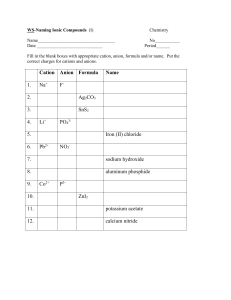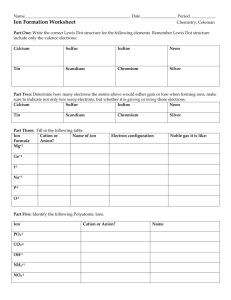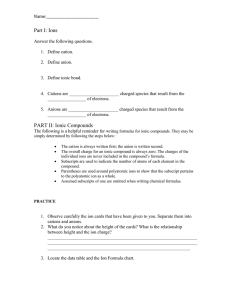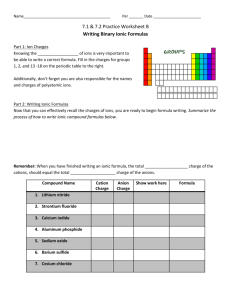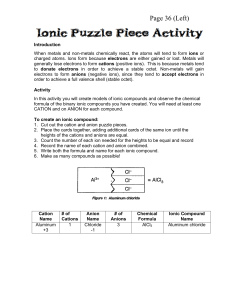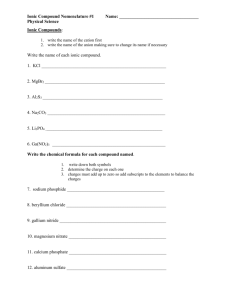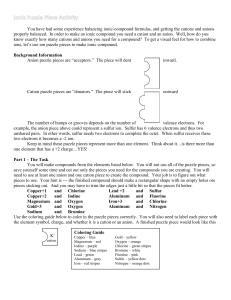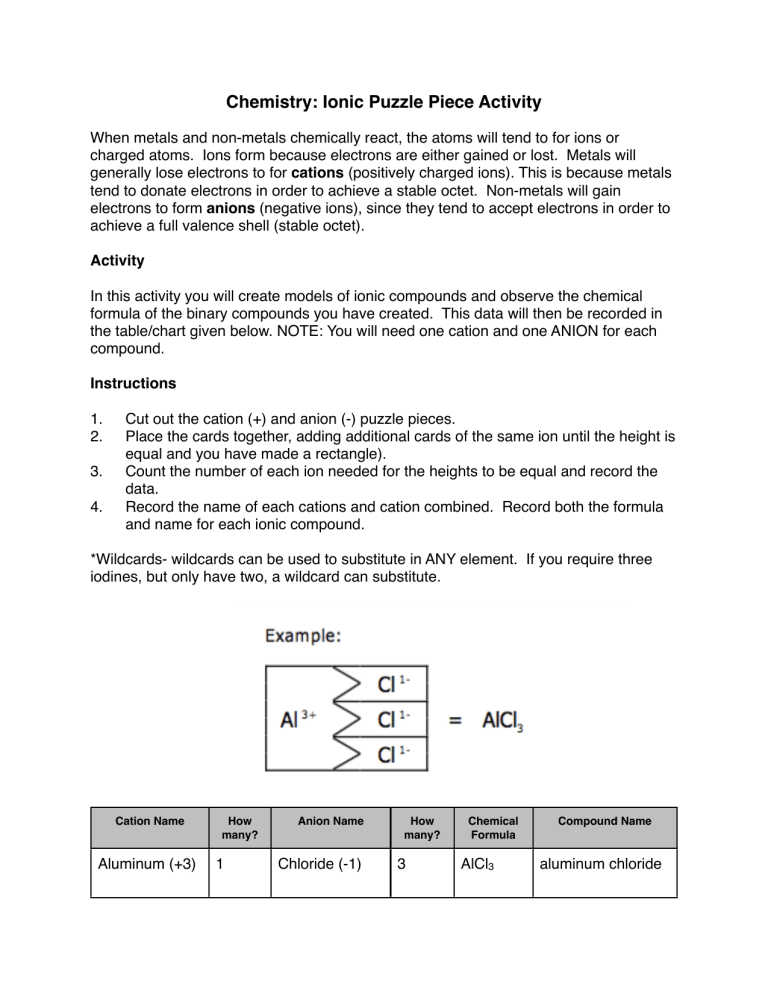
Chemistry: Ionic Puzzle Piece Activity When metals and non-metals chemically react, the atoms will tend to for ions or charged atoms. Ions form because electrons are either gained or lost. Metals will generally lose electrons to for cations (positively charged ions). This is because metals tend to donate electrons in order to achieve a stable octet. Non-metals will gain electrons to form anions (negative ions), since they tend to accept electrons in order to achieve a full valence shell (stable octet). Activity In this activity you will create models of ionic compounds and observe the chemical formula of the binary compounds you have created. This data will then be recorded in the table/chart given below. NOTE: You will need one cation and one ANION for each compound. Instructions 1. 2. 3. 4. Cut out the cation (+) and anion (-) puzzle pieces. Place the cards together, adding additional cards of the same ion until the height is equal and you have made a rectangle). Count the number of each ion needed for the heights to be equal and record the data. Record the name of each cations and cation combined. Record both the formula and name for each ionic compound. *Wildcards- wildcards can be used to substitute in ANY element. If you require three iodines, but only have two, a wildcard can substitute. Cation Name Aluminum (+3) How many? 1 Anion Name Chloride (-1) How many? 3 Chemical Formula AlCl3 Compound Name aluminum chloride Cation Name How many? Anion Name Aluminum (+3) Fluoride (-1) Aluminum (+3) Bromide (-1) Iron (+3) Phosphide (-3) Lithium (+1) Iodide (-1) Sodium (+1) Nitride (-3) Potassium (+1) Phosphide (-3) Titanium (4+) Fluoride (-1) Lithium (+1) Oxide (-2) Lithium (+1) Nitride (-3) Sodium (+1) Chloride (-1) Sodium (+1) Sulfide (-2) Magnesium (2+) Phosphide (-3) Potassium (+1) Iodide (-1) Potassium (+1) Oxide (-2) Calcium (2+) Fluoride (-1) How many? Chemical Formula Compound Name SNC 2P J Kropac Cation Name How many? Anion Name Copper (+2) Oxide (-2) Silver (+1) Bromide (-1) Magnesium (2+) Fluoride (-1) 1. 2. ! 3. ! 4. How many? Chemical Formula Compound Name Do metals form anions or cations? What is the charge for all elements in group 1? group 2? group 15? group 17? Can an ionic compound ever consist of a cation-cation or anion-anion bond? ! ! Explain. When naming a binary compound, what ending do you use to represent the anions?
